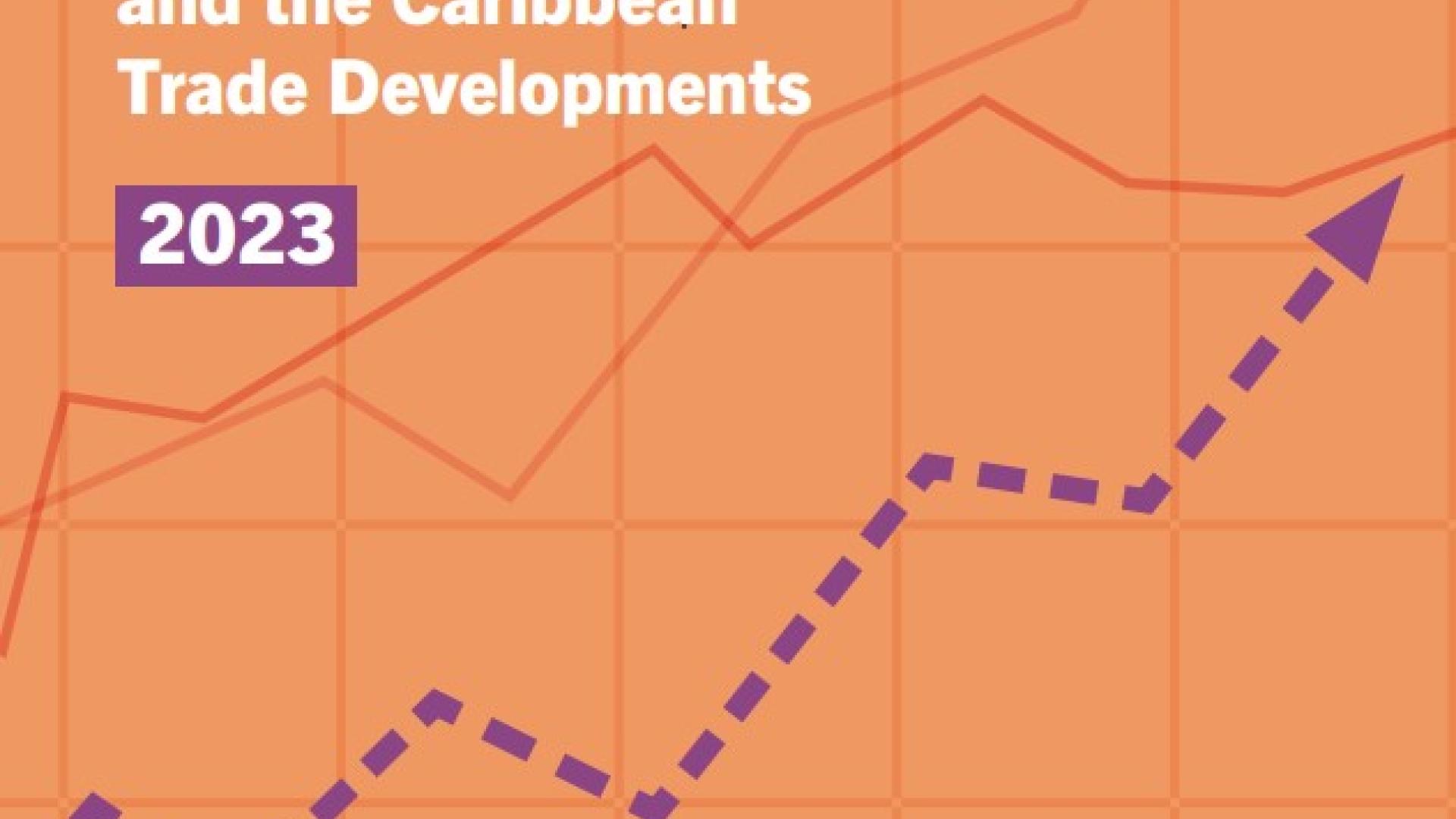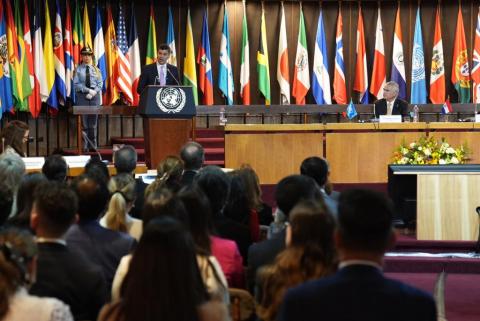Press Release
Watch video of the press conference.
(With correction of Peru and Guatemala's exports value)
(10 September 2013) The foreign trade performance of Latin America and the Caribbean reflects the weak global economy. Regional export values are expected to grow by just 1.5% in 2013 (3% in volumes and -1.5% in prices) - which is similar to the 1.4% growth observed in 2012. Meanwhile, imports are expected to expand by 4.5%, which will bring the region's trade surplus down to 8.0 billion dollars in 2013 (compared to 41.0 billion dollars in 2012), according to estimates presented today in Santiago in a new report from the Economic Commission for Latin America and the Caribbean (ECLAC).
In its annual report, Latin American and the Caribbean in the World Economy 2013, the Commission states that the weak global economy continues to affect the buoyancy of world trade. The latter is expected to grow by around 2.5% in volume in 2013. This would mean trade growing more slowly than global GDP for the second year in a row - which has not been seen since the 1980s.
Mexico and Central America, which export mainly to the United States, are predicted to benefit from the emerging recovery in that country. However, limited European growth will slow exports from some South American countries that focus on that particular market.
Latin American and Caribbean countries whose exports are mainly to China and the rest of Asia will probably chalk up higher volume growth, while at the same time experiencing a gradual change in demand from commodities to more processed products.
In terms of countries, Paraguay and Uruguay show the largest increases in export values in 2013 (33% and 14%, respectively), and this was largely due to considerable export growth in soybean and meat exports. In contrast, some of the region's countries are seeing their export values fall, such as Peru (-9,7%). Mexico, the region's top exporter, will see export growth of almost 3%. Brazil, the region's second main exporter, will see a standstill in exports.
The document also shows gains in the region's terms of trade between 2004 and 2011, which accounted for almost half of growth in gross national income in Chile (47%), as well as major contributions in Ecuador (35%), Mexico (27%) and Brazil (22%). These figures show an excessive dependence on the cycle of international commodity prices (a crucial feature of the region's development).
Mega-agreements can change the international rules
In the report, ECLAC states that one of the main features of the current international economic situation are mega-regional negotiations linking the main world production networks: Europe, North America and Asia.
Several mega-regional negotiations under way are changing the face of world trade. Some of the main examples include the Trans-Pacific Partnership Agreement (TPP), the Transatlantic Trade and Investment Partnership (TTIP) between the European Union and the United States, the Regional Comprehensive Economic Partnership (RCEP) (involving the 10 ASEAN members, and Australia, China, India, Japan, New Zealand and the Republic of Korea) and the free trade agreements between China, Japan and the Republic of Korea, and between the European Union and Japan. All of these initiatives aim to create large economically integrated spaces at the regional level (in Asia), as well as at the trans-Atlantic and trans-Pacific levels.
These mega-negotiations include topics that are not regulated by the World Trade Organization and that are important for international production networks. The agenda is becoming increasingly sophisticated, with a view to harmonizing the operating rules of various production networks to facilitate the operations of multinationals in North America, Europe and Asia.
Mega-regional negotiations under way will probably have considerable impact on the geographical distribution and governance of world trade and investment flows over the next few years. The scale of these initiatives could result in a redefinition of the rules of international trade by 2020. To date, this redefinition has taken place on the periphery of the WTO, and without tackling some of the pending issues on the trade agenda that are the most interesting to developing countries.
According to the document, as well as diverted trade and investment flows, these negotiations could result in the region's countries facing restricted access to knowledge and innovation opportunities provided by new technologies, if the positions of the lobbies observed so far in the main economies prevail.
Mega-regionalism poses the challenge of improving the international economic standing of the region's countries, which would help to produce subregional value chains and progress towards plurinational industrial policy practices. The document therefore examines the potential of some subregional production networks, as well as suggesting policies that place learning about clusters and new-wave industrial policies at the heart of regional integration.
Also see:
- Complete document. Latin American and the Caribbean in the World Economy 2013.
- Presentation by ECLAC Executive Secretary, Alicia Bárcena (in Spanish).
- Table. Latin America and the Caribbean: foreign trade in goods, 2012 and 2013.
Any queries should be sent to the ECLAC Public Information and Web Services Section.
E-mail: prensa@cepal.org; Telephone: (56 2) 2210 2040.



